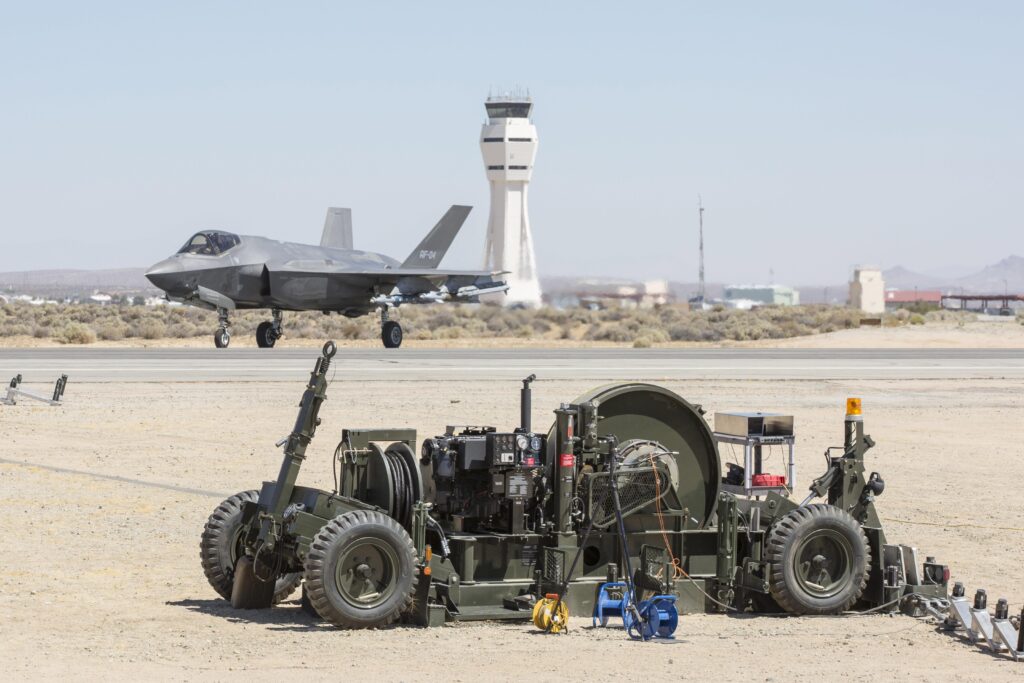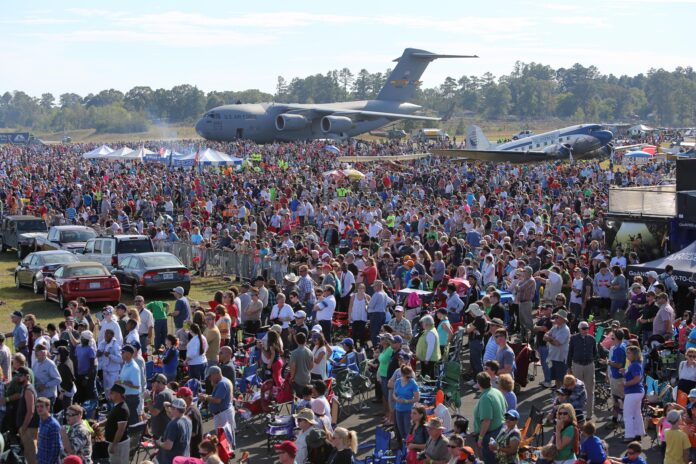The air show industry is unique. Few industries operate under circumstances in which businesses that would normally be competitive can collaborate. Throughout the industry, air show professionals capitalize on this unusual situation to create practical solutions to complex problems and build opportunities for future success by opening doors and developing solid relationships.

As an organization, ICAS is built to facilitate these kinds of opportunities. And the pandemic has made collaborations of different kinds more achievable and, in some cases, more essential. Challenges abound even in the best of air show seasons. Still, the difficulties that the industry has faced have created an environment in which it is critical to strengthen existing partnerships and foster new ones. Indeed, COVID has forced the industry to make collaboration a mindset for success.
In the end, running an air show business without outside input and perspective is inefficient and unproductive. While the overall air show industry is relatively small compared to other industries, the robust system of knowledge and the willingness to share that knowledge provides advantages. Meeting, getting to know, and learning from others in the air show business is comparatively easy; most people in the business are just two or three degrees of separation from each other. And, combined with an industry-wide willingness to help, that closeness provides everybody in our industry with a chance to connect and grow.
A Convention Together

One of the best opportunities for air show collaboration is the ICAS Convention. Each December, education sessions are scheduled and conducted to share everything from simple sixty-second tips to deep, day-long dives into particular topics.
These sessions help build innovation as they give users the knowledge and leading-edge ideas that help shape success in the industry’s future. But they also connect like-minded delegates on topics and subjects that have far-reaching effects.
Beyond education, the ICAS convention creates an opportunity to begin nurturing many of these partnerships, often through the mentorship program, which was re-invigorated at the 2021 convention. One of those who again volunteered as a mentor was long-time ICAS member, Brenda Kerfoot.
Presently working with both Herb Gillen Air Shows and the Yankee Air Museum, Kerfoot believes there are endless opportunities to collaborate in the air show industry. “There is a wealth of information out there,” she said. “That’s the beauty of the industry. To be successful, it behooves you to be collaborative,” she continued. Kerfoot notes that the convention helps to share information and connect those with an opportunity ready to be seized. “Our industry is full of people that are happy to talk to you,” she continued.
Stealing Borrowing Sharing Ideas
Each year, nearly 200 different organizations conduct air shows in North America. And while many may look the same, the parts that make them run are often very different. Shows experiment with new concepts and – if they are successful – those new tactics, processes and approaches become part of the annual plan.

One such concept that has been evolving and gaining popularity recently is the VIP chalet. Of course, it’s not a new idea to the air show community. Nonetheless, when an event can pull it off effectively and sustainably, that model can be utilized elsewhere, and hopefully with the same level of success.
Kerfoot has seen the proof firsthand, watching shows she has been involved with take ideas and opportunities like the chalets and clubs, and implement them in a new location or for a new constituency with rousing levels of success. Today, high-end chalet tickets with high ticket prices are proliferating and introducing a new and important revenue stream for many shows.
“There’s always something to learn,” she said. Kerfoot’s recommendation to other events and opportunities is to “Go, learn, and watch.” She’s seen the sharing of ideas through mentorship and the air show academies as a compelling opportunity for idea growth and involvement. “Even if you are not brand new, maybe there is something you can learn too,” she noted.
Partnerships
Partnership collaboration is certainly not new for the air show industry either. Air shows routinely partner with other events and air show businesses to help fill a need or requirement. The uniqueness comes when collaborative partnerships find ways to work together at multiple levels to create new successes.
 One such venture was the recently-revived Thunder Over New Hampshire Air Show. A partnership between Herb Gillen Air Shows and the New Hampshire Air National Guard, the event drew unique challenges that had to be overcome. Beyond the fact that it had been ten years since the previous show at that location, one specific challenge was that part of the grounds were on base property and part on civilian property, which organizers “re-imagined” as not so much a challenge, but an opportunity. Working in strict compliance with Air National Guard and U.S. Air Force policy, the show was able to monetize, through a title sponsorship, a plaza on the civilian side while still creating a VIP chalet option.
One such venture was the recently-revived Thunder Over New Hampshire Air Show. A partnership between Herb Gillen Air Shows and the New Hampshire Air National Guard, the event drew unique challenges that had to be overcome. Beyond the fact that it had been ten years since the previous show at that location, one specific challenge was that part of the grounds were on base property and part on civilian property, which organizers “re-imagined” as not so much a challenge, but an opportunity. Working in strict compliance with Air National Guard and U.S. Air Force policy, the show was able to monetize, through a title sponsorship, a plaza on the civilian side while still creating a VIP chalet option.
“The New Hampshire show was a fabulous partnership,” said Herb Gillen of Herb Gillen Air Shows. “The base and an outside group came together to create something better than either could have done separately.”
Gillen has taken some of that knowledge and continued to grow his opportunities to work with military events on setting up premium seating options. While military events are required to offer free admission to events like an air show, they can still take advantage of offering upgraded VIP seating and parking options. “Guests are going to have a better experience,” stated Gillen. “And likely, the shows are going to make more money.”
ICAS President John Cudahy sees this as an area of possible growth and innovation in the coming years. “These kinds of partnerships between the military and private sector are a natural outgrowth of the military’s use of air show contractors during the last 40 years. And the approach that the New Hampshire Guard pursued will be more and more common as the military seeks to continue providing open house opportunities to the public without the time and expense of doing it all themselves.”
Problems and Solutions
Even a long-standing air show can sometimes run into new and unexpected difficulties. One such growing problem is the cost and complications of acquiring mobile arresting gear (MAG) for a civilian show with military support. Required by many of the military demo teams, finding a certified crew to set up the MAG and even finding the equipment itself can become a roadblock to hosting one of those teams.
 At the California Capital Air Show, air show director Darcy Brewer has run into just that issue in multiple variations over the past few years. Hosted at the Sacramento Mather Airport, her team has long faced challenges in getting the gear and the crew needed for MAG support for their event. But her struggles have helped create a partnership with other events in San Francisco, Salinas, and Minden-Tahoe. In partnership with show organizers in those locations, Brewer was able to partner and develop solutions that helped to give each event answers to their MAG-related individual difficulties through shared setups, crews, and scheduling.
At the California Capital Air Show, air show director Darcy Brewer has run into just that issue in multiple variations over the past few years. Hosted at the Sacramento Mather Airport, her team has long faced challenges in getting the gear and the crew needed for MAG support for their event. But her struggles have helped create a partnership with other events in San Francisco, Salinas, and Minden-Tahoe. In partnership with show organizers in those locations, Brewer was able to partner and develop solutions that helped to give each event answers to their MAG-related individual difficulties through shared setups, crews, and scheduling.
“Except for sequestration, never before have people been forced to collaborate to this level in the industry,” said Brewer. But she hopes that the collaborative trend will continue well into the future, with many more positive results. “Mastering this industry requires being a part of the team,” she specified.
Others in the industry agree. “I tell people, it’s the ICAS way,” stated Kerfoot.








